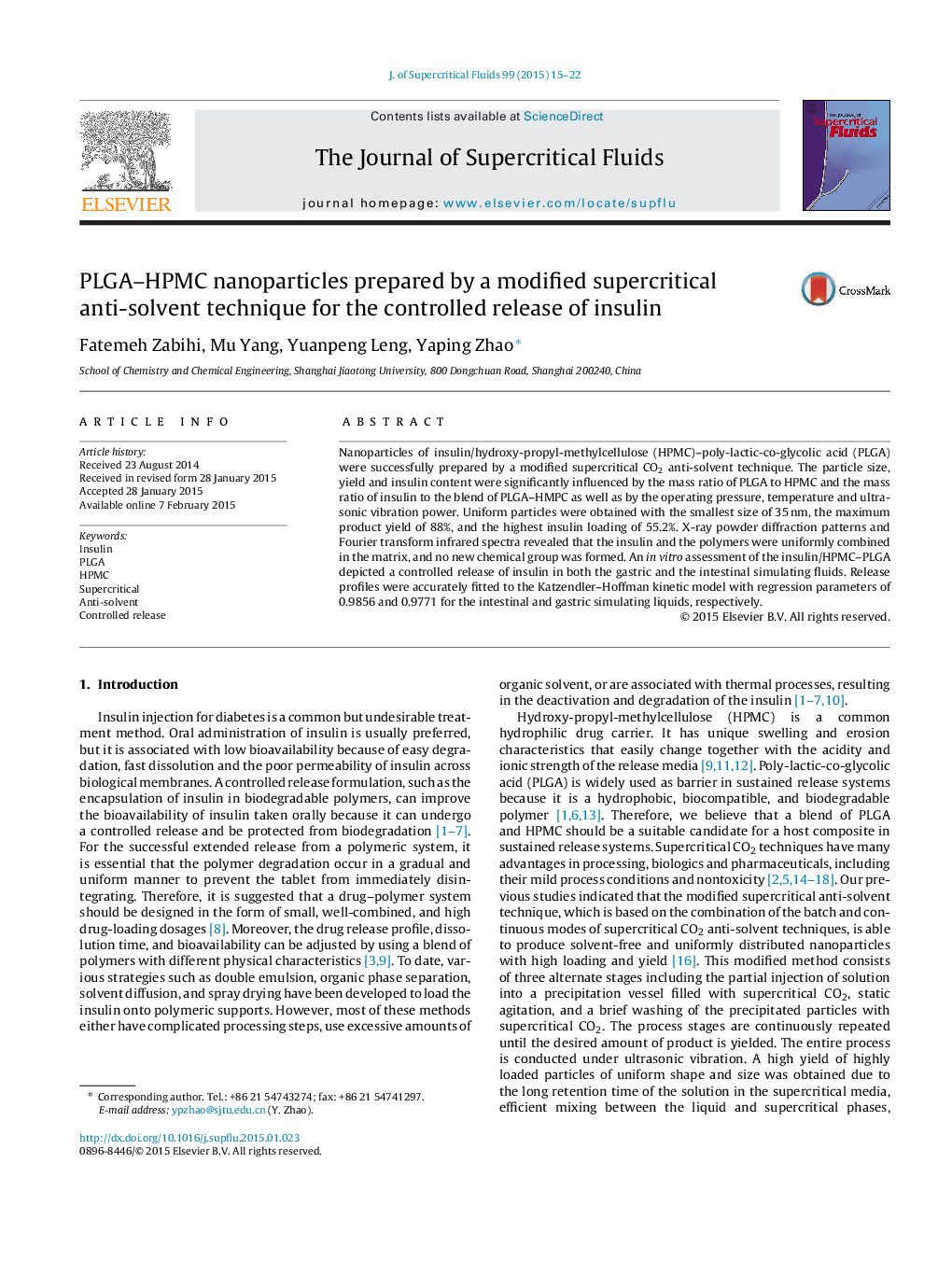| Article ID | Journal | Published Year | Pages | File Type |
|---|---|---|---|---|
| 230367 | The Journal of Supercritical Fluids | 2015 | 8 Pages |
•Insulin/PLGA–HPMC nanoparticle was prepared using modified supercritical antisolvent method.•High product yield and high insulin loading were obtained.•Influences of operating factors on the insulin/PLGA–HPMC characteristic were elucidated.•The insulin showed a controlled-release in gastric and intestinal simulating fluids.•Release profiles of the insulin were well correlated with the Katzendler kinetic mode.
Nanoparticles of insulin/hydroxy-propyl-methylcellulose (HPMC)–poly-lactic-co-glycolic acid (PLGA) were successfully prepared by a modified supercritical CO2 anti-solvent technique. The particle size, yield and insulin content were significantly influenced by the mass ratio of PLGA to HPMC and the mass ratio of insulin to the blend of PLGA–HMPC as well as by the operating pressure, temperature and ultrasonic vibration power. Uniform particles were obtained with the smallest size of 35 nm, the maximum product yield of 88%, and the highest insulin loading of 55.2%. X-ray powder diffraction patterns and Fourier transform infrared spectra revealed that the insulin and the polymers were uniformly combined in the matrix, and no new chemical group was formed. An in vitro assessment of the insulin/HPMC–PLGA depicted a controlled release of insulin in both the gastric and the intestinal simulating fluids. Release profiles were accurately fitted to the Katzendler–Hoffman kinetic model with regression parameters of 0.9856 and 0.9771 for the intestinal and gastric simulating liquids, respectively.
Graphical abstractFigure optionsDownload full-size imageDownload as PowerPoint slide
